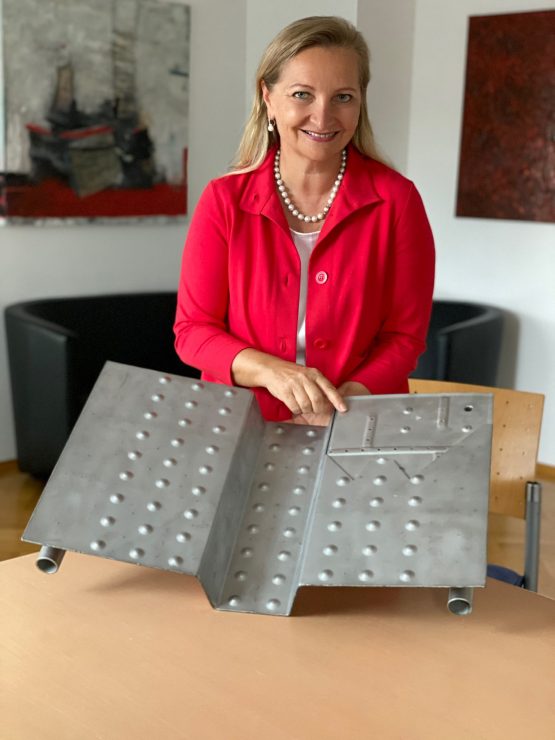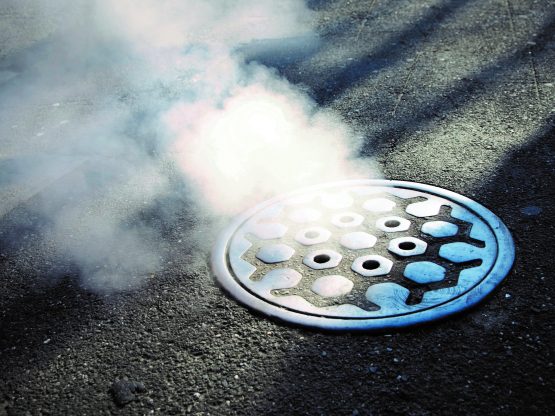Renewable wastewater energy reduces dependence on natural gas
The energy transition, in particular the phase-out of natural gas, has taken on a new urgency due to the war in Ukraine and the tense relationship between West and East. Quickly available, renewable and politically less volatile energy sources are in demand - the technology is already available in Austria, now it is time to roll it out as quickly as possible. Energy generation from wastewater, for example, which the construction and environmental technology company Rabmer specializes in, is said to have great potential. According to the company, around 14% of the thermal energy required for buildings in Austria can be produced regionally and sustainably.
Vienna/Altenberg, March 16, 2021 Until now, the term "sustainable energy" primarily referred to renewable energy sources. With the war in Ukraine, the political component of the term and security of supply are now also gaining in importance. Europe's dependence on natural gas is suddenly no longer primarily a climate-related problem, but also a supply problem due to the high market share of Russian gas - which covers around 80 percent of Austria's gas requirements. The time pressure to find reliable alternatives quickly is increasing.
Fourteen percent of the heating requirements of all buildings in Austria can be covered by energy from wastewater
Three quarters of energy consumption in the building sector in this country is used for heating, cooling and hot water preparation, and almost exclusivelyCO2-critical energy sources such as oil or gas are currently used for this.
"Rising energy prices and the energy shortage caused by the war in Ukraine show that we urgently need new energy sources that reduce dependency and guarantee security of supply. This also applies to deliveries, spare parts and, last but not least, technical expertise - in the event of a crisis, we should no longer be dependent on global supply chains. The respective system must also be able to be implemented at relatively short notice, but must promise long-term, reliable output. It must also reduceCO2 emissions," explains Ulrike Rabmer-Koller, Managing Partner of the Rabmer Group. "The list of requirements is long, but there are systems that meet all of these criteria. One of these is the use of wastewater, a renewable energy source for the sustainable heating and cooling of buildings, which can be used to produce around 14% of the required heating energy and the increasing demand for cooling energy regionally and sustainably," says Rabmer-Koller.
In urban areas in particular, there are ideal conditions for using energy from wastewater for renewable heating and cooling of buildings. In Vienna, for example, wastewater has an average temperature of 16 degrees Celsius all year round and does not fall below eleven degrees even in winter.[1 ] This high initial temperature, which is higher than that of geothermal energy, groundwater or outside air - the usual energy sources for heat pumps - makes the use of wastewater so interesting, as the heat pump works much more efficiently and therefore requires little additional energy itself.
Energy from wastewater has been recognized as renewable energy since 2018 and government subsidies have recently become available. "In 2021, energy from wastewater was subsidized by the Climate and Energy Fund for the first time. This has now also given the technology a turbo boost in Austria. In the last 12 months alone, we have examined over 20 major projects. Many of them could be implemented in the short term," explains Rabmer-Koller.
One of the country's newest systems was installed by Rabmer at the new Wien Kanal headquarters in Inzersdorf in 2021. This covers 100 percent of the building's heating and cooling requirements and delivers up to 450 kilowatts of heating and 500 kilowatts of cooling capacity in full operation. Rabmer will soon be implementing another lighthouse project in Vienna, namely the supply of the new "VIO Plaza" real estate complex at the Meidling Hauptstraße U4 station with an output of 1.2 MW of heating and 6 MW of cooling from the canal. Rabmer is sourcing all the materials needed to build the systems from the EU.
How does energy generation from wastewater work?
To make wastewater usable as a renewable energy source, heat exchangers are first installed in the public sewer or, in the case of larger systems, as a bypass outside the sewer or in the wastewater treatment plant outflow. The wastewater in the sewer flows around the heat exchangers and heats a separate water circuit, which in turn is connected to heat pumps in the building to be supplied. These heat pumps extract the heat from the water and bring it to the desired temperature level. In winter, a building can be economically heated or hot water can be prepared in this way, while in summer the process is reversed to cool the building. Wastewater energy can also be fed into district or local heating networks and district or local cooling networks.
The basic requirement for this type of energy generation is a sewer with a flow rate of at least ten liters per second and a dimension of DN 400 or larger. In addition, the wastewater temperature must be constantly above eight degrees Celsius, the distance to the consumer must not exceed 900 meters, and the heating or cooling load requirement must be at least 50 kW.

Rabmer

Rabmer